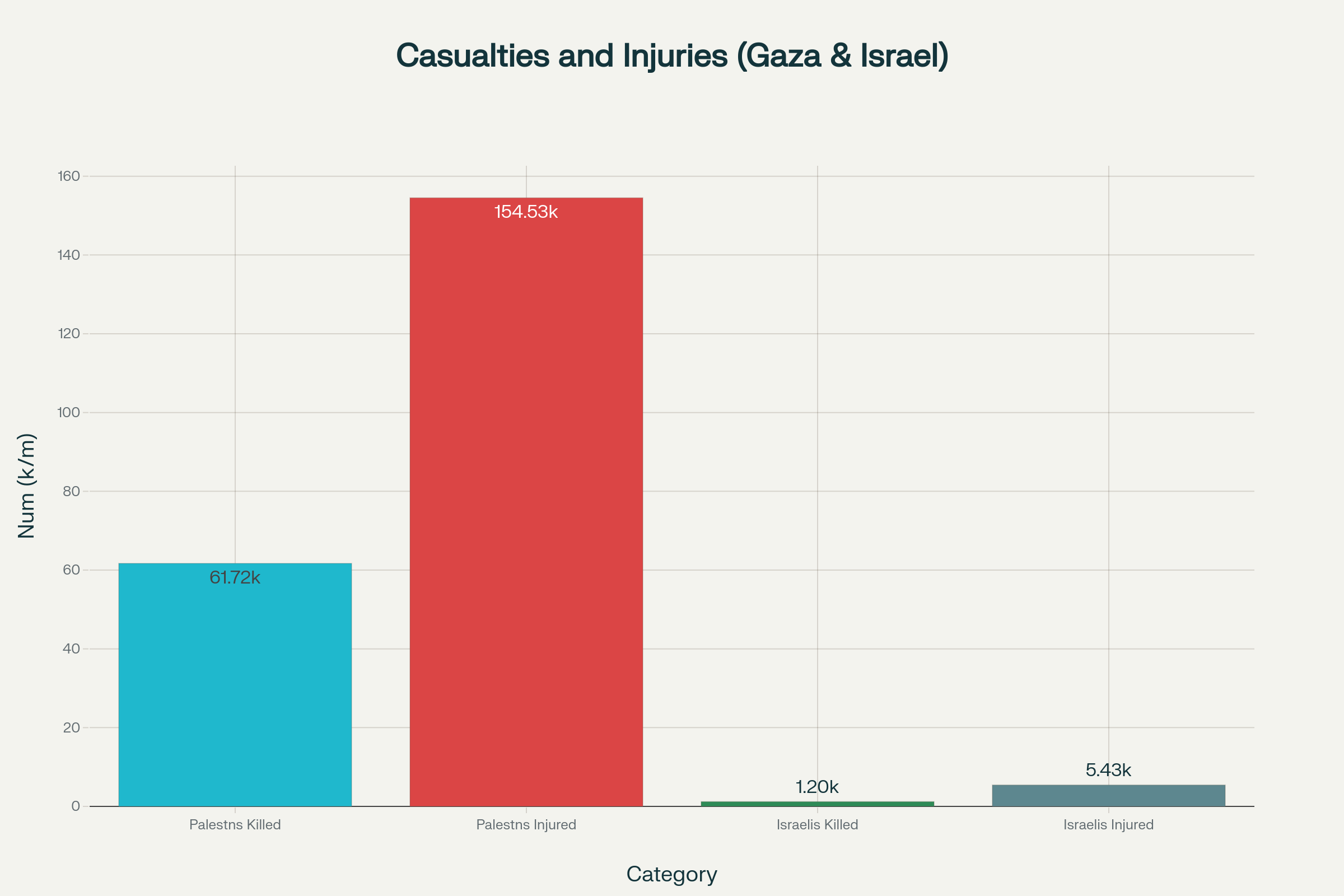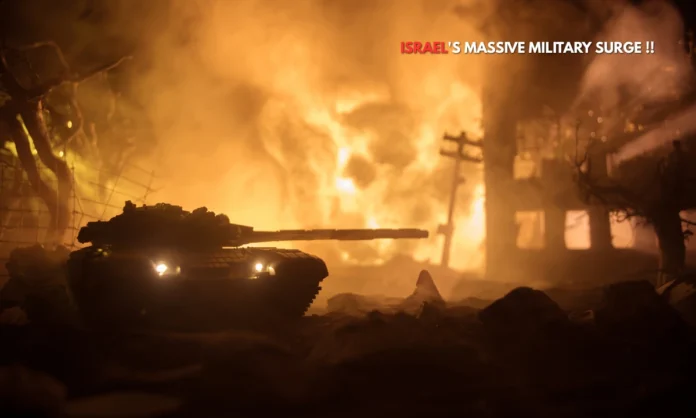Key Highlights
- Israel’s largest reservist mobilization in months involves 60,000 new personnel plus service extension for 20,000 active troops
- The military call-up targets Hamas strongholds in Gaza City’s most densely populated neighborhoods
- Economic strain intensifies as the deployment affects high-tech workers in nation under 10 million people
Military Escalation Through Historic Reservist Mobilization
Israel’s Defense Minister Israel Katz has approved the most significant reservist mobilization since the conflict began, calling up 60,000 new personnel while extending service for 20,000 currently active troops. This massive military deployment targets Hamas operations in Gaza City’s most densely populated areas, marking a critical escalation in the 22-month war.
The reservist mobilization comes despite growing domestic opposition, with hundreds of thousands of Israelis recently rallying for ceasefire negotiations. Military officials indicate operations could begin within days, with the deployment focusing on areas where Israeli forces haven’t previously operated and where Hamas maintains active military capabilities. The scale of this military call-up represents Israel’s determination to achieve what Prime Minister Benjamin Netanyahu calls the “complete defeat of Hamas,” even as ceasefire negotiations continue.
Strategic Operations Enabled by Military Deployment
- The reservist mobilization will deploy forces to previously untargeted Gaza City neighborhoods where Hamas remains operationally active
- Primary objective of the military operation involves destroying Hamas’s extensive underground tunnel network
Military operations enabled by the troop deployment will concentrate on the Zeitoun neighborhood and Jabaliya refugee camp, where Israeli forces are already conducting preparatory groundwork. The strategic focus of this military expansion centers on Hamas’s vast underground tunnel system, which remains critical to the organization’s infrastructure despite significant leadership losses.
Israeli officials report that Hamas continues regrouping and launching attacks, including rocket fire toward Israeli territory, justifying the expanded military presence. Gaza City serves as Hamas’s military and governing stronghold, making it one of the last major refuges in northern Gaza where hundreds of thousands seek shelter.
The reservist mobilization represents a shift toward targeting areas where Israeli forces haven’t maintained sustained presence, indicating Hamas’s ability to reestablish operations in previously cleared zones. Military sources emphasize that the tunnel network destruction mission is essential for preventing Hamas from rebuilding capabilities through this comprehensive deployment strategy.
Economic Impact of Large-Scale Military Call-Up
- The reservist mobilization creates substantial economic burden, with 20% working in Israel’s crucial high-tech sector
- Israel’s 2025 defense budget increases 21% to accommodate the ongoing military operations
The massive troop deployment generates significant economic pressure in a country with fewer than 10 million people. With one-fifth of those affected by the military call-up employed in Israel’s vital technology sector, the deployment disrupts critical economic activities during an already strained period.
Israel’s 2025 budget allocates 756 billion shekels ($215 billion), representing a 21% increase, with $38.6 billion dedicated to defense spending. The current military operation alone costs NIS 3.4 billion according to government projections, adding substantial burden to existing expenditures.
Economic analysts warn that continued military deployment without ceasefire resolution forces difficult choices between increased deficit spending, further cuts to health and education budgets, or tax increases during an election year. The prolonged conflict has already strained Israel’s economy, with the additional troop call-up removing key workers while increasing costs.
Growing numbers of exhausted personnel express opposition to the extended military service, citing repeated deployments lasting hundreds of days and resentment toward those who haven’t served. Many affected by the reservist mobilization prefer returning to civilian life rather than continuing indefinite military obligations.
Humanitarian Consequences of Military Operations
- Over 61,722 Palestinians killed and 154,525 injured since October 2023 according to official statistics
- 86.3% of Gaza territory remains under Israeli military zones or displacement orders as operations expand
The expanded military activities through troop deployment occur amid catastrophic humanitarian conditions, with UN data showing over 61,722 Palestinian deaths and 154,525 injuries since the conflict began. Current statistics indicate 86.3% of Gaza remains within militarized zones or under displacement orders, with the military expansion expected to control additional areas.

Casualties and Injuries in Israel-Hamas Conflict (2023-2025)
International organizations report that 90% of Gaza’s 2 million residents have been displaced, with most areas destroyed or under military control. UNRWA indicates being prevented from delivering humanitarian aid, including medical supplies, for over five months as military operations intensify through the expanded deployment.
The population faces severe famine threats while living in catastrophic conditions within the limited accessible areas. International experts warn that expanded operations through additional troop deployment could worsen the humanitarian crisis, with 28 nations including France and the UK calling for Israel to cease military activities.
Save the Children’s regional director described Gaza’s situation as “apocalyptic reality for children and families,” emphasizing the unprecedented scale of suffering. The organization warns that expanded military operations risk creating additional mass displacement among already vulnerable populations through this significant deployment strategy.
Political Opposition to Extensive Military Deployment
- Families of 50 remaining hostages oppose the reservist mobilization, fearing risk to rescue efforts
- Former military and intelligence officials question the deployment strategy over diplomatic solutions
The extensive troop call-up faces substantial domestic opposition from multiple sectors. Hostage families worry that expanded military operations through the deployment could jeopardize negotiations and rescue possibilities for the 50 remaining captives, 20 believed alive.
Former army and intelligence leaders publicly oppose the expanded military operations, arguing gains remain minimal while risks continue escalating. Veterans’ organizations report widespread fatigue among those affected by repeated deployments who’ve served extended tours over 22 months.
Recent mass demonstrations drew hundreds of thousands of Israelis demanding immediate ceasefire and hostage release, demonstrating significant public opposition to continued military operations. The reservist mobilization proceeds despite this substantial domestic resistance and growing international pressure for diplomatic solutions over military expansion.
Netanyahu’s government relies on far-right coalition partners who support the military deployment and oppose ceasefire negotiations, creating tension between expanded operations and potential diplomatic breakthroughs. Arab mediators report Hamas has agreed to proposed ceasefire terms, with Egypt stating “the ball is now in Israel’s court” regarding the deployment decision.
Final Assessment on Military Strategy
Israel’s historic reservist mobilization of 60,000 personnel represents the most significant military escalation in Gaza in recent months, targeting Hamas’s remaining urban strongholds despite mounting domestic opposition and international criticism. The economic burden of this military expansion adds pressure to Israel’s strained budget while humanitarian conditions continue deteriorating. As ceasefire negotiations remain stalled, this massive troop deployment signals Israel’s commitment to military solutions over diplomatic alternatives, raising questions about the conflict’s trajectory and the sustainability of continued military operations through such extensive personnel commitments.


